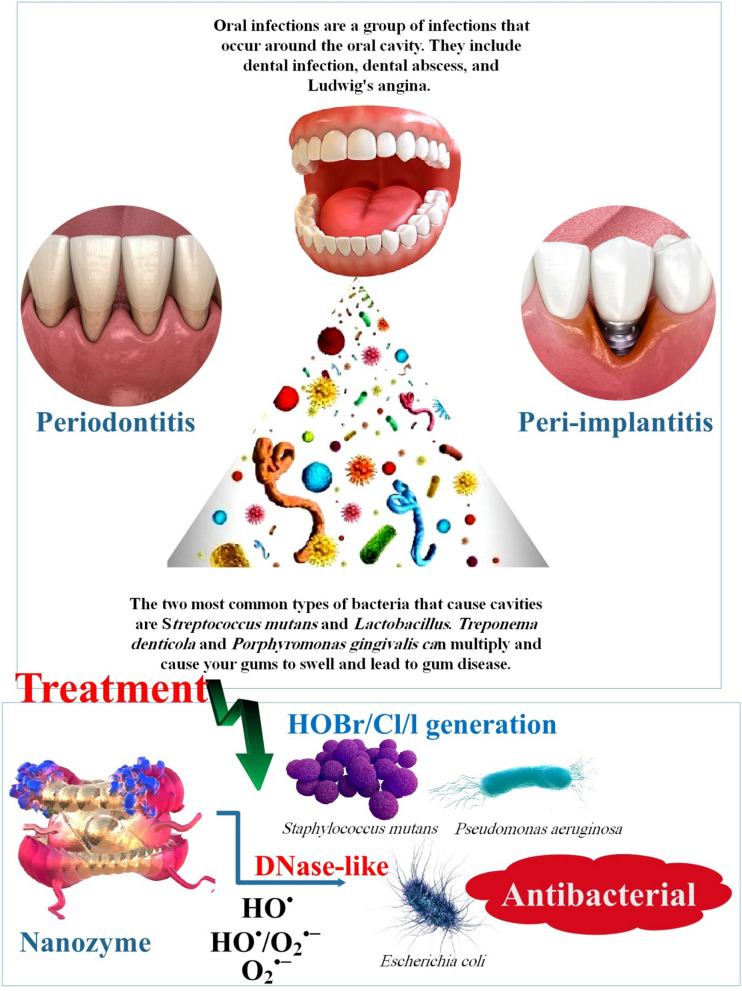- Record: found
- Abstract: found
- Article: found
The potential use of nanozymes as an antibacterial agents in oral infection, periodontitis, and peri-implantitis

Read this article at
Abstract
Several studies suggest that oral pathogenic biofilms cause persistent oral infections. Among these is periodontitis, a prevalent condition brought on by plaque biofilm. It can even result in tooth loss. Furthermore, the accumulation of germs around a dental implant may lead to peri-implantitis, which damages the surrounding bone and gum tissue. Furthermore, bacterial biofilm contamination on the implant causes soft tissue irritation and adjacent bone resorption, severely compromising dental health. On decontaminated implant surfaces, however, re-osseointegration cannot be induced by standard biofilm removal techniques such as mechanical cleaning and antiseptic treatment. A family of nanoparticles known as nanozymes (NZs) comprise highly catalytically active multivalent metal components. The most often employed NZs with antibacterial activity are those that have peroxidase (POD) activity, among other types of NZs. Since NZs are less expensive, more easily produced, and more stable than natural enzymes, they hold great promise for use in various applications, including treating microbial infections. NZs have significantly contributed to studying implant success rates and periodontal health maintenance in periodontics and implantology. An extensive analysis of the research on various NZs and their applications in managing oral health conditions, including dental caries, dental pulp disorders, oral ulcers, peri-implantitis, and bacterial infections of the mouth. To combat bacteria, this review concentrates on NZs that imitate the activity of enzymes in implantology and periodontology. With a view to the future, there are several ways that NZs might be used to treat dental disorders antibacterially.
Related collections
Most cited references156
- Record: found
- Abstract: not found
- Article: not found
Nanozymes: Classification, Catalytic Mechanisms, Activity Regulation, and Applications
- Record: found
- Abstract: not found
- Article: not found
